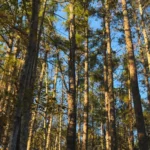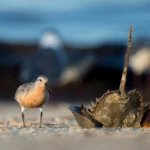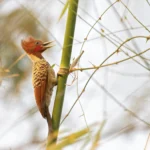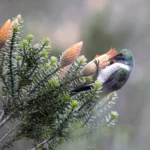
Signal Boost
ABC guides Motus efforts in the U.S., and since 2023, Smith and his team have installed or directly supported the installation of 122 Motus stations in 20 states or territories and three countries.

Your “Treequently” Asked Questions, Answered
ABC’s program staff are here to answer some of our most “treequently” asked questions. This story is not exhaustive, but it uses the relevant experiences of ABC’s program staff to provide a snapshot of their work in forested habitats from Michigan to Peru.

Congress Advances Provision Benefiting Horseshoe Crab and Shorebird Conservation
Amid all the noise and headlines related to the federal government’s reopening, the horseshoe crab and birds that rely on it — including the federally Threatened Red Knot — have quietly claimed a victory. Among many provisions in the U.S. Congress’ continuing resolution is one instructing th...

Proposed Endangered Species Act Rule Changes Pose Major Risks to Birds
Today, the U.S. Fish and Wildlife Service (USFWS) and National Marine Fisheries Service (NMFS) announced proposed rules that would severely weaken the Endangered Species Act (ESA), one of the most effective laws ever enacted to prevent extinctions.

The Flute
Archeological texts often list “perforated bone tubes” among artifacts unearthed from early humans’ caves and burial sites. Such artifacts may hold evidence of human minds awakening to music — signs of our ancestors turning bone and air into song and of an ancient ability to feel beauty pier...

Lasting Stewardship for Bird Reserves
ABC and our partners have been in the reserve business for more than a quarter century: Reserves are the first line of defense against bird extinctions, and they provide crucial refuges for both migratory and resident bird species, as well as scores of insects, mammals, amphibians, reptiles, and pla...

Filling the Gaps in Bird Conservation
To prevent the extinction of Latin America’s most threatened birds, ABC aims to ensure that each of the species most at risk has at least one well-managed protected area that safeguards a minimal amount of habitat sufficient for survival. Accomplishing this requires asking (and answering) question...









